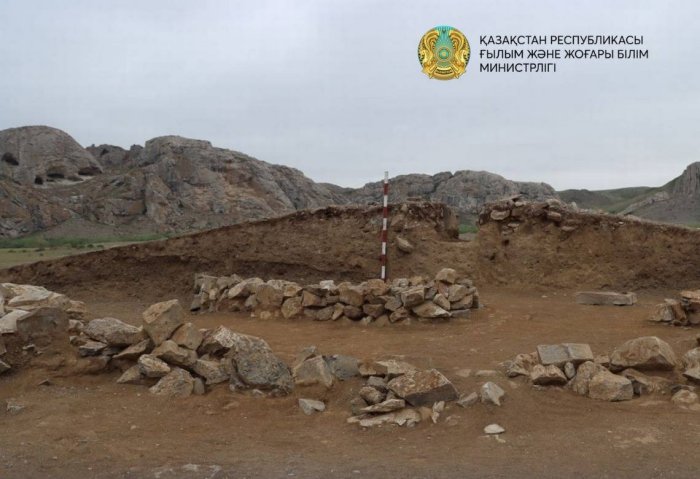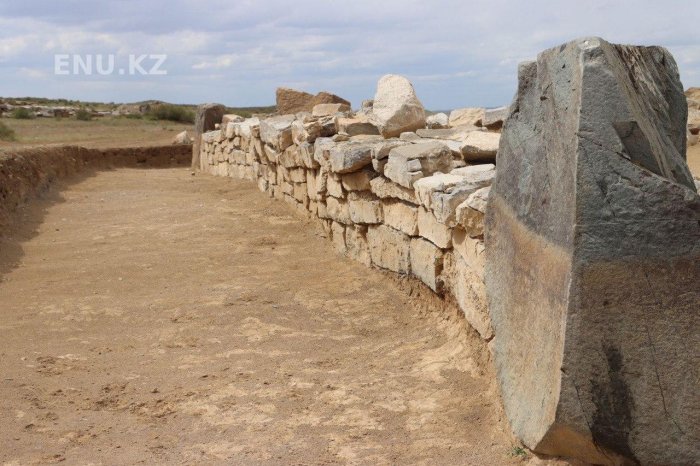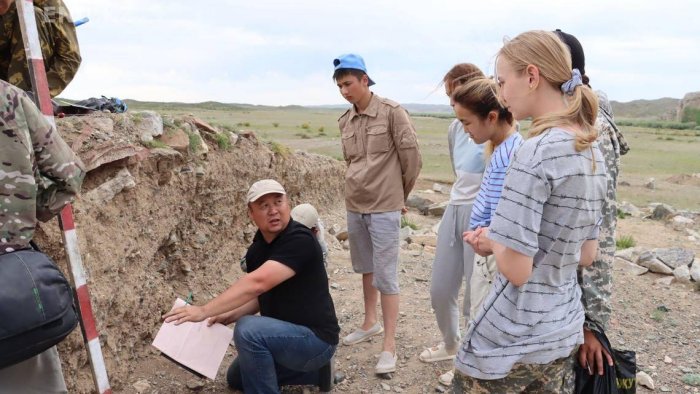Jan Bartek – AncientPages.com – Ancient pyramids have been found on all continents, and the test ancient structures’ purpose varies depending on the civilizations that constructed them. It cannot be denied that there are still aspects ᴀssociated with pyramids the world of science does not fully understand. Still, each archaeological discovery offers more information about our ancestors’ traditions, customs, and religious beliefs.

A section of the pyramid found in Toktamys. Image credit: Kazakhstan’s Ministry of Science and Higher Education
The L. N. Gumilyov Eurasian National University archaeologists have unearthed a sophisticated 4,000-year-old steppe pyramid in Kazakhstan. The discovery was made when scientists were excavating part of the Kyrykungir monumental complex in Toktamys, a site located about 420 miles southeast of the capital city of Astana.
The ancient structure has been overlooked for years until now.
According to the science team, the large Bronze Age pyramid, estimated to be approximately 4,000 years, has six sides, each measuring about 42 feet long. This type of ancient structure has previously not been found in the steppes of Eurasia, and excavations are underway in the Abai region.
“The steppe pyramid is built with great precision. It is a very sophisticated complex structure with several circles in the middle,” historian Ulan Umitkaliyev, head of the University’s’ archaeology and ethnology department, said in the press release.

One side of the pyramid. Image credit: L. N. Gumilyov Eurasian National University

Archaeologist L. N. Gumilyov with his students. Image credit: L. N. Gumilyov Eurasian National University
“Findings in excavations, ceramics, female gold earrings, and other jewelry indicate that this Bronze Age was the center of culture in ancient times. This means that even at that time, the cult of the horse was extremely high, as evidenced by the discovery of horse bones around the stone building. There are also images of camels,” Umitkaliyev added.
See also: More Archaeology News
The University informs excavations at the Kyrykungir monumental complex have been ongoing since 2014, the Eurasian National University said.
Future excavations will hopefully lead to more intriguing discoveries providing us with a glimpse into the region’s ancient past.
Written by Jan Bartek – AncientPages.com Staff





